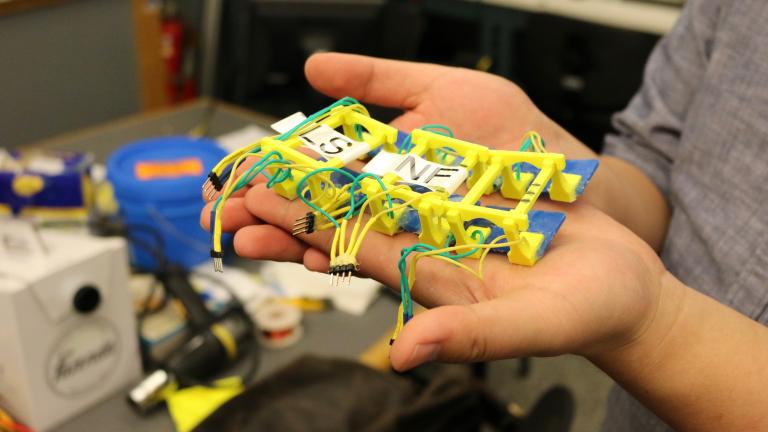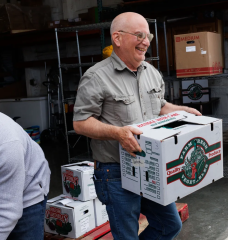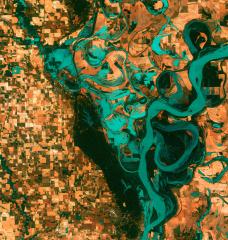
You Wu is a mechanical engineer and roboticist at MIT. After completing his Bachelor’s of Science at Purdue, You came to MIT for graduate studies. At MIT, You and his team developed “Robot Daisy”, a small robot designed to detect leaks in water pipes. MIT Climate sat down with You to discuss sustainability in water systems, mitigating climate change through robotics, and the social and environmental impacts of his invention. If you're interested in learning more about You's work, check out Pipeguard Robotics.
Mikaela: Tell us a little bit about you and your background.
You: I grew up in China, in a city called Changzhou, outside of Shanghai. I came to the US when I was 18 to attend Purdue and then graduate school at MIT. Before I came to MIT, I was working on a video game startup with a professor from Purdue. But I realized I wanted to do something with more of an impact.
At MIT I found this particular project related to water protection and sustainability. I grew up in an area with a population of 20 million people. We had scheduled days without electricity or water. They would shift zone by zone throughout the city, and on certain days certain zones would not have water, due to supply and infrastructure issues. While some of us were not getting much needed water, 20% of clean water was lost in transpiration. I really wanted to tackle this problem. My personal motivation is making a difference through sustainability. My research interests have been reducing water loss in transportation and improving the water system. In particular, I wanted to address pipeline leak issues in networks.
Mikaela: Tell us about Robot Daisy.
You: Daisy was the first functional prototype we built. It took about four years to get it working, and we have built different versions of it, including a large one we call “lighthouse”. These robots are the first of their kind - being made out of soft material, they can bend and go around pipe elbows. Most importantly, it’s a lot cheaper. Other robots look like snakes and are made out of train segments. Just one part can cost thousands of dollars. Robot Daisy can be made for $200, and is very reliable.

The coolest part of Robot Daisy is the sensor. We made fin sensors, which are essentially like the robot’s hands. They touch the pipe wall as the robot is going through the pipe, and flows with the water. As it touches the wall, it can feel if there’s a suction force on the pipe wall. Suction only exists if water is escaping from the pipe. So, it can tell if there’s a leak by measuring suction pressure.
Mikaela: What are the environmental impacts of this technology?
You: Every day, 20% of clean water produced is lost due to leaks and inefficiency. It takes a lot of time and energy to produce clean water; 2% of all energy production goes into cleansing water. More importantly, we draw water from local water bodies to feed and bathe our population. One way to put it is, if we can eliminate all the water leaks, we can produce water for an additional 20% of the population in our area for free. Given the leaks in our system, we are wasting energy, resources, and hurting the environment.

One important aspect of climate change, in addition to greenhouse gas emissions, is the decline of local water bodies, ecosystems, and wetlands. The more water we draw, the less is left for plants and wildlife in the area. We take water from those ecosystems and waste it in transportation, and we are exacerbating the decline of wetlands and local water bodies. Robot Daisy can help fix that.
Mikaela: What are the social impacts of this technology?
You: Access to clean water is a human right. When we were working with one of our potential partners in Mexico, we learned that in Mexico City, the edges of the city are where there is the most poverty. When there are water shortages or issues, they are the first to lose their access to clean water. Mexico City lost 40% of its water due to leaks. When leaks happen, the poor are hurt first. We want to help those people, and all people, get clean water.
Mikaela: What does “sustainability” mean to you?
You: Sustainability to me means that we can do the same thing, or live the same way for a long time, without seeing significant constraints. As the population grows everyone won’t be able to live the same way, and use water the same way. By making water transportation leak-free and more efficient, we can help make clean water more available and sustainable for a long time to come.
Mikaela: What direction would you like to take your research next?
You: I’m going to graduate from MIT in June, and my goal is to take what we have built into the commercial space, and have real world impact, rather than something that runs in lab pipes. We want this device to be used by cities around the world to make pipes safer, more efficient, and make people less worried about water.






